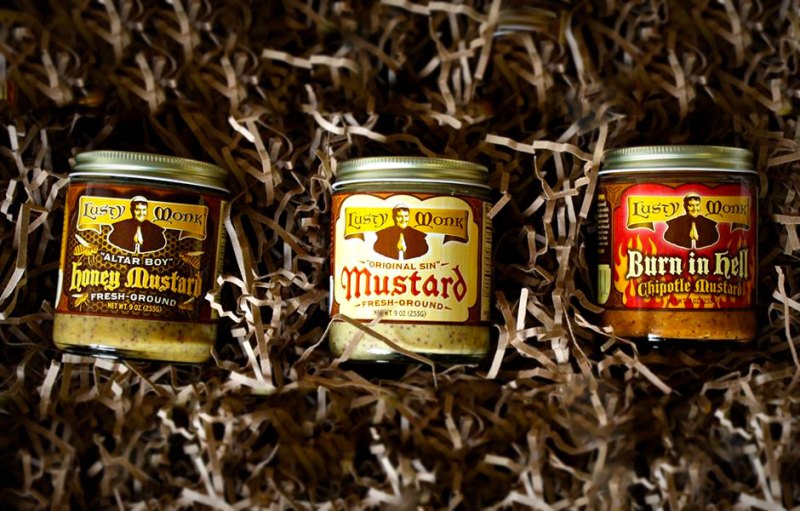
“Then I started working part time at a brewery, where the only thing we had to eat at the bar was pretzels,” says Davis as she explains the growth. “I started handing it out and it gained a bit of a cult following.”
Her Lusty Monk Mustard is now a must-have on the tables of many of her fans. The “Original Sin” is her best seller and can be used in any dish that calls for Dijon mustard, giving it a bit more zing. The “Burn in Hell” chipotle mustard took the grand prize at the Scovie Awards this year. The third variety produced is called “Altar Boy” honey mustard.
She named the product Lusty Monk Mustard after returning to her history books to research the history of mustard. “I came across a little tidbit about a very strict order of monks in the Middle Ages who weren’t allowed to eat mustard because they thought it was an aphrodisiac. I thought that was funny and named my mustard, Lusty Monk,” says Davis.
As demand grew, Davis and her brother, Scott, decided to invest in building a business. They took some “food entrepreneur” classes at a community college and launched their brand.
“Then my sister and her husband, who live in Albuquerque, decided I wasn’t making it fast enough. They decided to start making the mustard in their area. So we have two locations: Asheville, NC and Albuquerque, NM—all in the family,” says Davis.
Lusty Monk Mustard is available in select stores and nationwide from their website.


